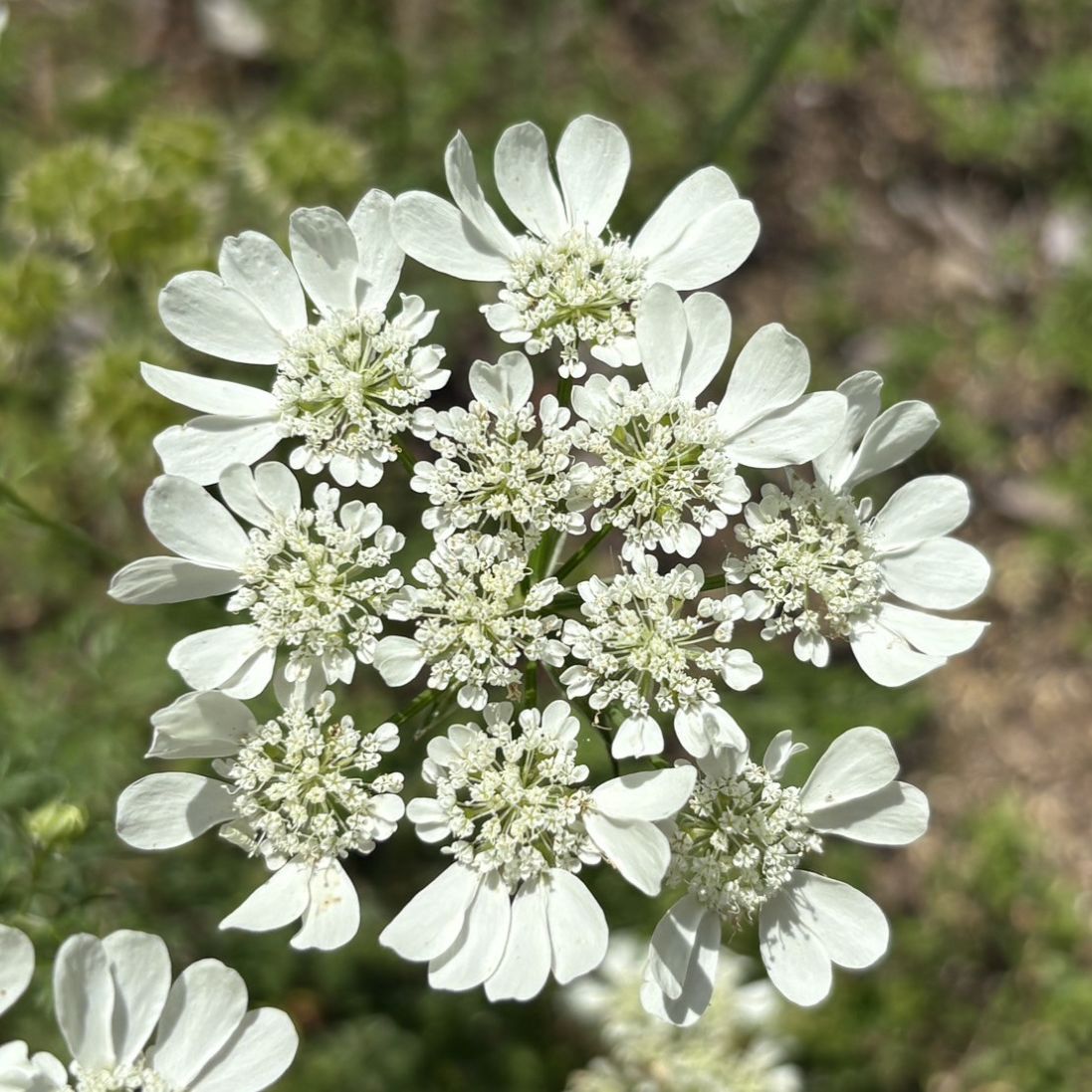ハナカザリゼリは美しい和名「花飾芹」、英名「ホワイトレースフラワー」があるものの、日本では園芸名「オルレア」で親しまれています。
White Lace Flower has a beautiful Japanese name “Japanese parsley like floral ornament”, but in Japan it is known by its horticultural name “Orlaya”.
【仮名】ハナカザリゼリ, ホワイトレースフラワー, オルレア, オルレア・グランディフローラ
【和名】花飾芹
【英名】White Lace Flower
【学名】Orlaya grandiflora
【誕生】05/ 22, 05/ 26
【開花】04, 05, 06月
【花色】White
ハナカザリゼリ
ハナカザリゼリの概要
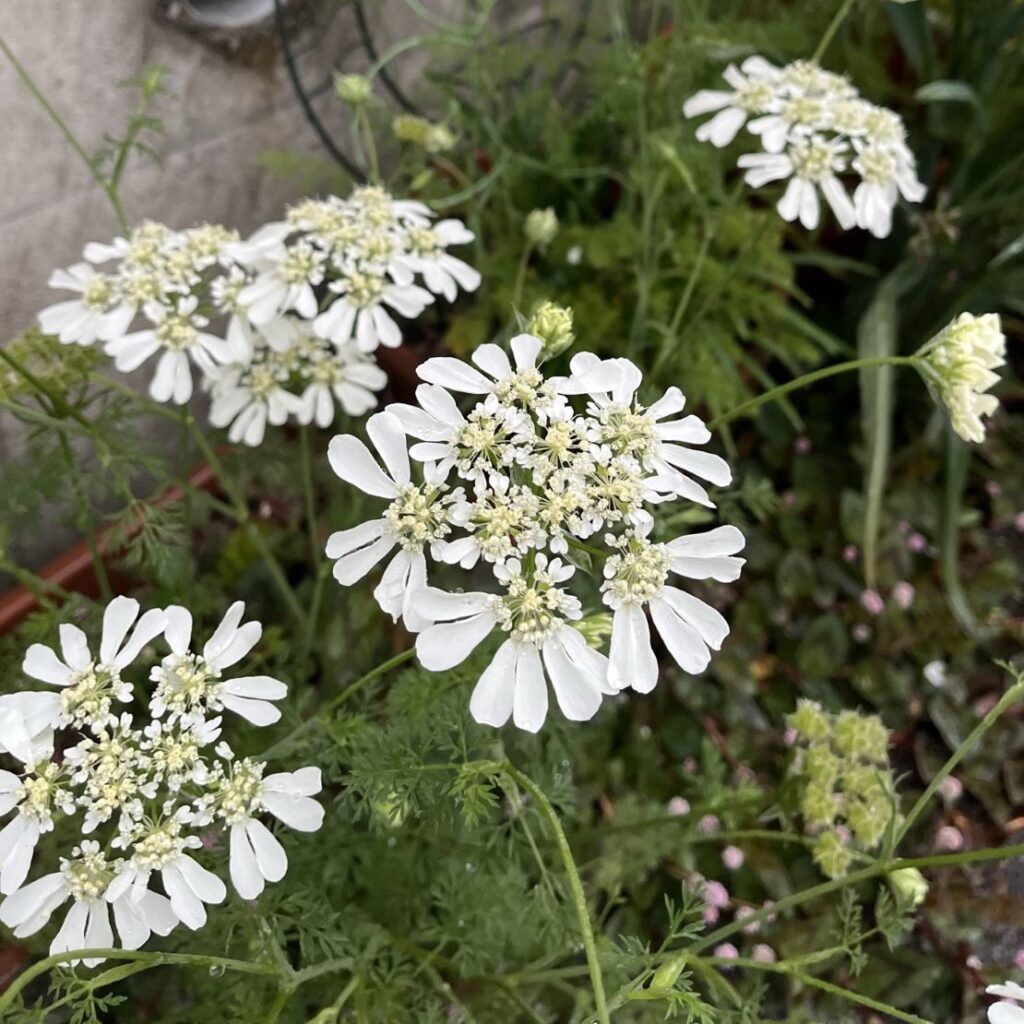
ハナカザリゼリはセリ科の1年草~多年草です。原産地は地中海沿岸。日本では1990年代から栽培が広がりました。寒さに強く、こぼれ種でも増殖。美しい和名や英名があるものの、日本では園芸名「オルレア」で親しまれています。花言葉は「可憐な心」「静寂」「細やかな愛情」。
ハナカザリゼリの名前

ハナカザリゼリの和名は「花飾り」のような花序、「芹」のような葉序に由来。英名ホワイトレースフラワーは「白色の縁飾りの花」という意味です。ラテン語の属名オルラヤはロシアの植物学者ヨハン・オルライへの献名。種小名グランディフローラは「大きな花」という意味です。
ハナカザリゼリの姿形
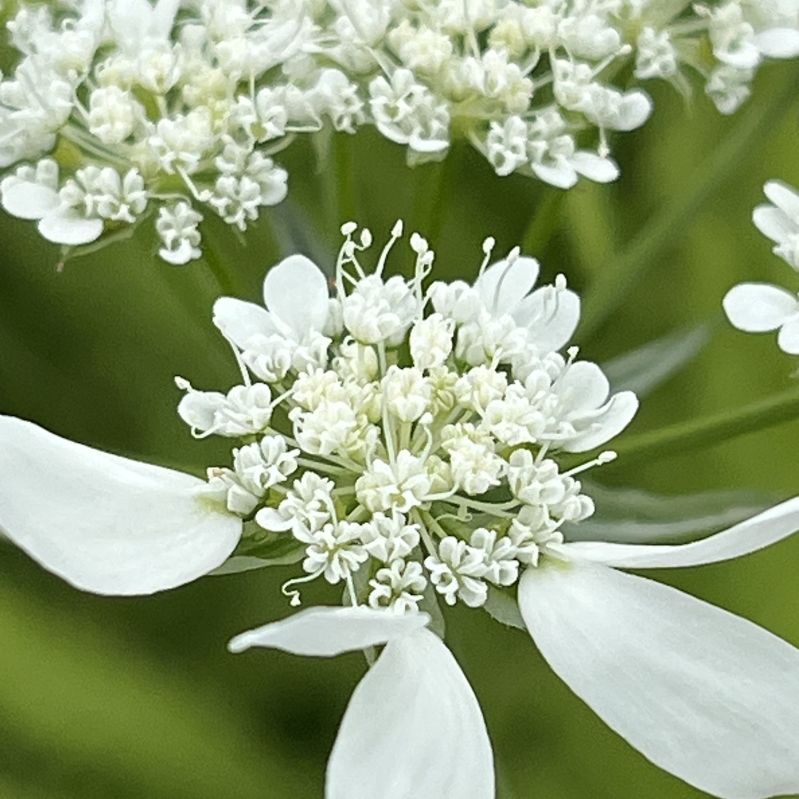
ハナカザリゼリは根が太く、真っ直ぐ下に伸びる一方、茎が真っ直ぐ立ち上がり、盛んに分岐します。葉は根生葉が長楕円形で有柄、茎生葉が羽状複葉で互生。花は白色の小花が集まり、周りの花弁が大きく、傘状に咲きます。花後は楕円形の2分果を結び、表面に白色の刺毛が密生。
ハナカザリゼリの空似
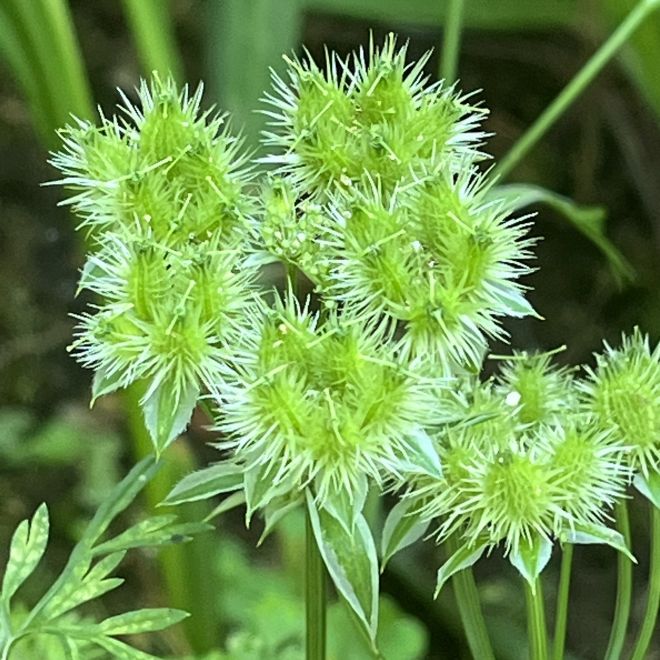
ハナカザリゼリの空似「毒芹擬」は英名も同じホワイトレースフラワー。傘のように花が集まって咲き、羽のように葉が裂けます。一方、草丈が大きく、葉がさらに細く、小花が花冠の中央も周りも均等。同じセリ科でも属が異なり、花が似ている「毒芹」とも、花飾芹とも遠縁です。
White Lace Flower
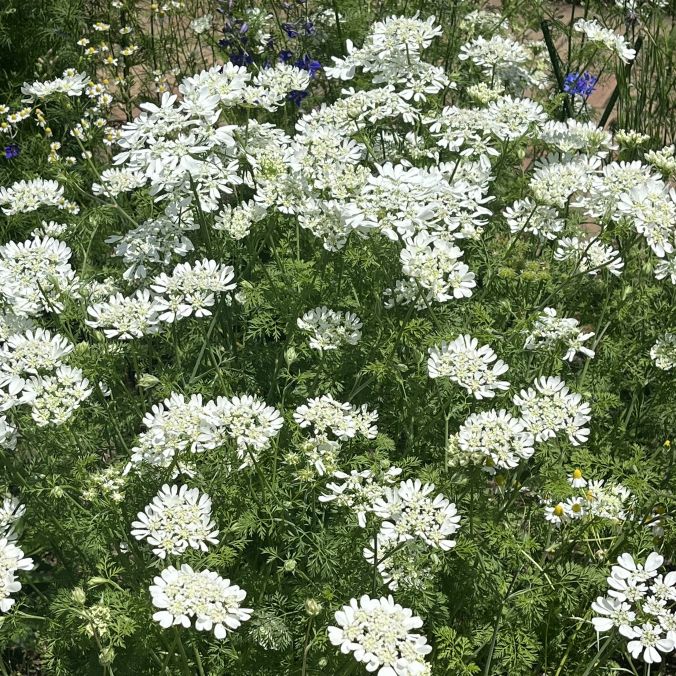
White Lace Flower is an annual to perennial plant of the Apiaceae family. It is native to the Mediterranean coast. Its cultivation has spread in Japan since the 1990s. It is cold-resistant and can grow by self-seeding. Although it has a beautiful Japanese name and English name, in Japan it is known by its horticultural name “Orlaya”. The flower language is “dainty heart”, “silence”, and “delicate love”.
The Japanese name of White Lace Flower means “Japanese parsley like floral ornament”. The Latin genus name Orlaya is a tribute to the Russian botanist Johann Orlay. The specific name grandiflora means “big flower”.
White Lace Flower has thick roots that grow straight down. On the other hand, the stem stands straight and branches vigorously. The basal leaves are oblong and stalked, while the stem leaves are pinnately compound and alternate. The flowers are small white florets with large petals around them, blooming in an umbrella shape. After flowering, they form an elliptical bipartite fruit with dense white spines on the surface.
Ammi majus, which is similar to White Lace Flower, has the same English name. The flowers bloom in an umbrella-like cluster, and the leaves split like feathers. On the other hand, the plant is tall, the leaves are even thinner, and the florets are even in the center and around the corolla. It is a different genus in the same family, Apiaceae, and is distantly related to Cicuta virosa and Orlaya grandiflora, which have similar flowers.

